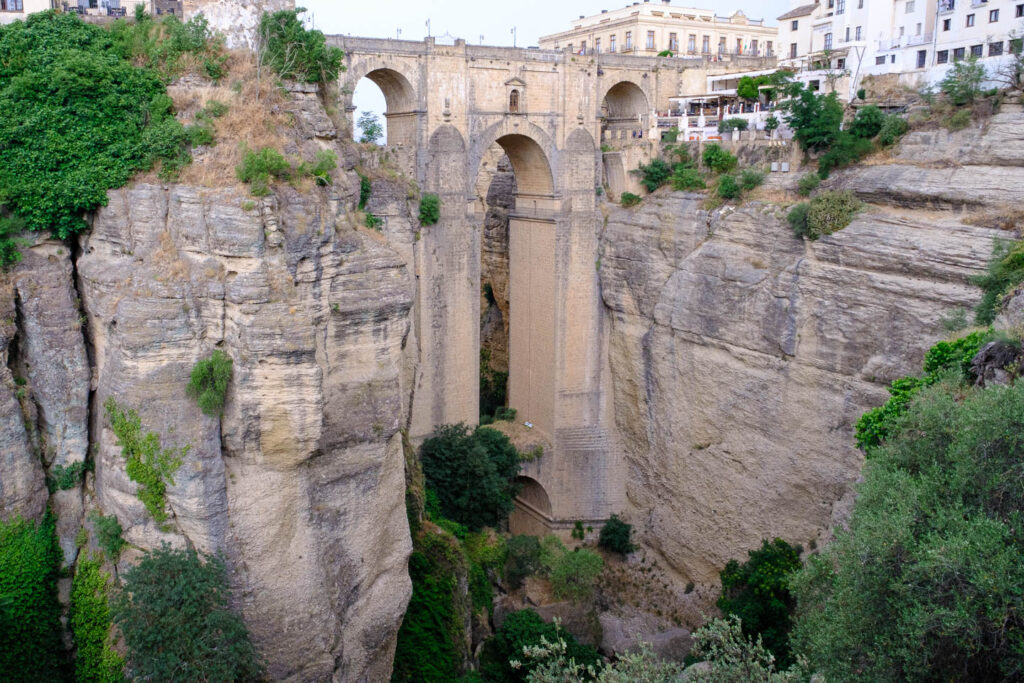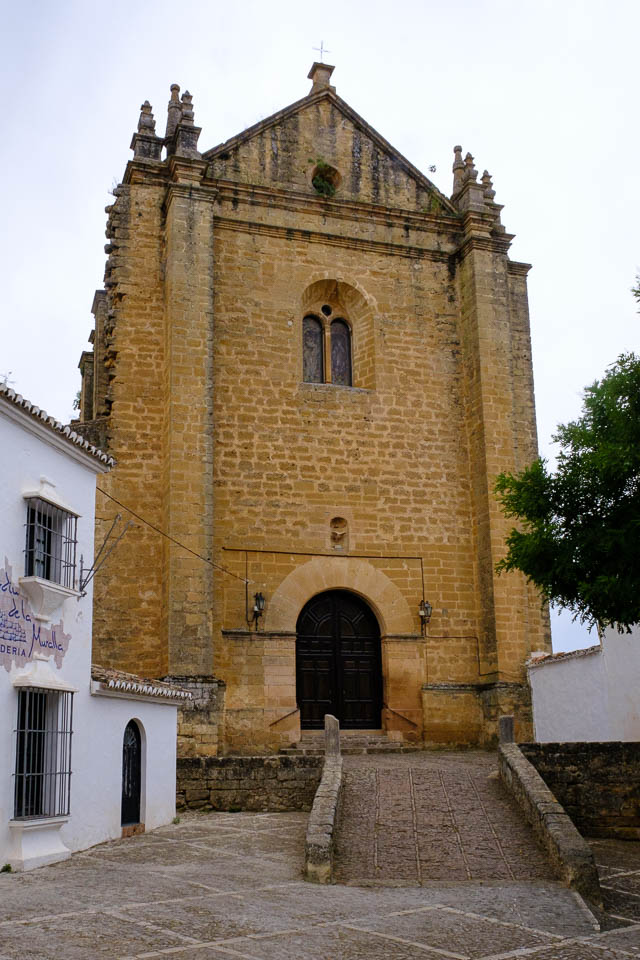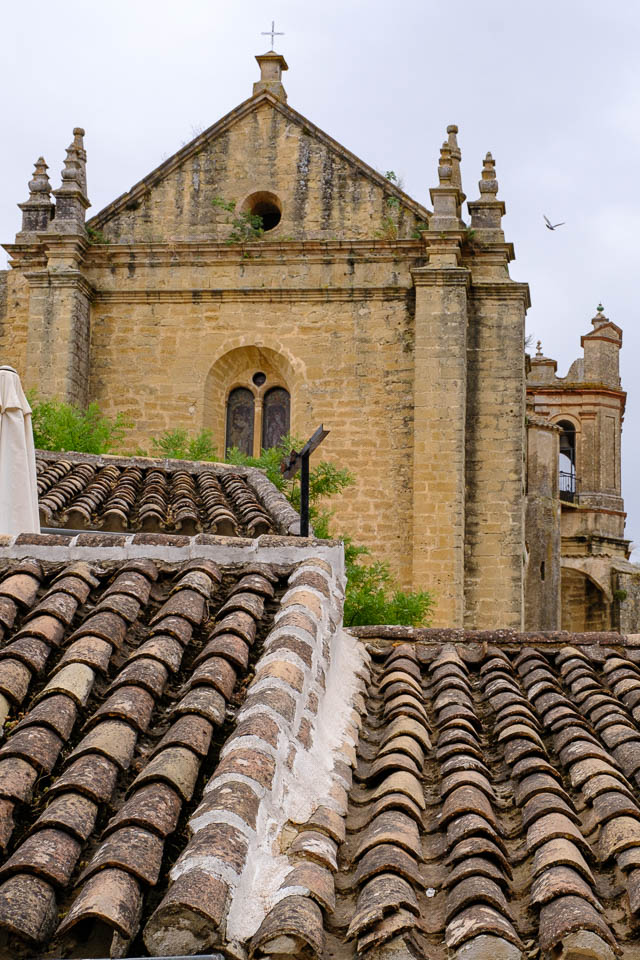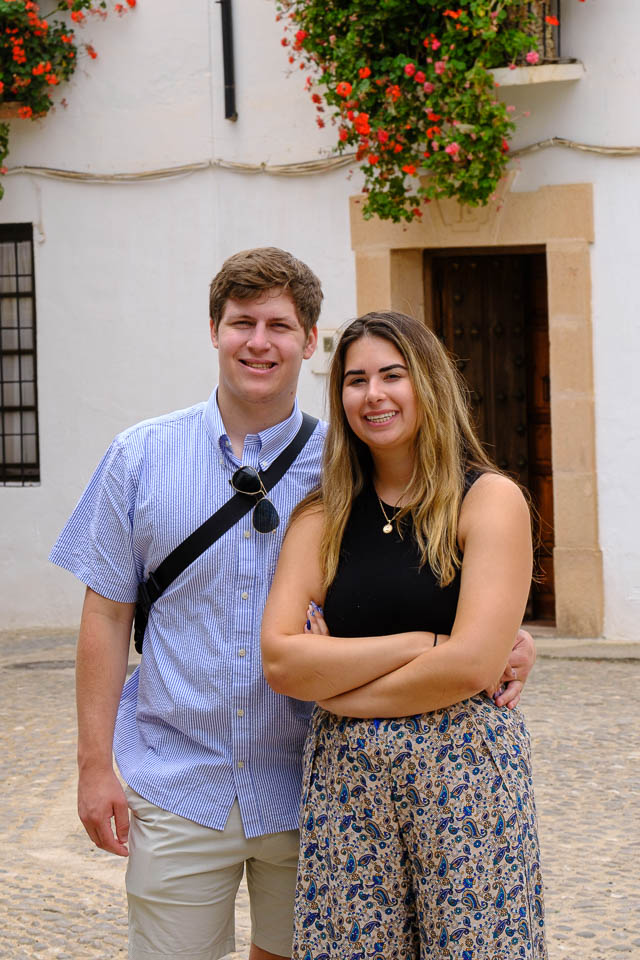I failed to mention yesterday that Chefchaouen was founded in the late 15th and early 16th century by Moors and Jews who left Spain after the final conquest of the Moors in Granada by Christians in 1492 (Ronda itself was conquered in 1485). While some Moors and Jews were allowed to remain, under strict, discriminatory rules, all were forcibly expelled by Philip II in the late 1560s. Those fleeing the repression of the Inquisition and those expelled ended up in, among other places, in North Africa and in Chefchaouen in particular.
Ronda, like much of Spain and Europe, was occupied by a series of external civilizations, notably the Phoenicians and later the Romans. Ronda has some remaining Roman evidence but much of the city was built during the Moorish occupation that began in 711 CE. After 1492 Ronda was under the control of various Spanish kingdoms and external rule by the Holy Roman Empire, Napoleon Bonaparte and so on. Bottom line: Ronda, like many places in the world reflects its complex history spanning thousands of years. We in the U.S. think 1492 of the beginning of history (conveniently neglecting the undocumented history of indigenous peoples before that date). In Ronda, 1492 is a relatively late date in the progression of history.
Jeff and I, along with my parents, Libby and Phil Rick, visited Ronda when Jeff was a teenager – maybe 28 years ago. We remember driving up in our rental car (from Tony in Malaga; that’s another story). Judy and Rebecca stayed behind because Rebecca wasn’t feeling well. We remember driving up through the mountains, parking near the Puerto Nuevo that spans the canyon formed by the Guadalevin river, walking by some sleepy shops to the bull ring and after a pleasant tour of the ring, returning to our condo on the Costa del Sol.
Times have changed. The city has grown up and the tourist trade has grown to keep pace with the times. Downtown has been converted into a pedestrian promenade with several blocks of shopping. The bridge across the canyon is still there, of course, and still quite impressive. But the overall “sleepy mountain village” feel is gone. Ah well.
The drive from Marbella follows a winding road through the mountains with numerous vistas worthy of a snap or two of the trusty camera. It took about an hour and a half with heavy traffic leaving Marbella.
In Rondo we had a guide, Hernando, who took us on a walking tour through the town to the Puerto Nueavo from several vantage points. We also walked to the square that was the original Plaza del Torres – plaza of the bulls – where until the bull ring was constructed in 1784. The original square has a former Moorish mosque, later converted to a Catholic monastery, on one side and a Spanish military barracks on another side. These served as vantage points for viewing the fights.
Hernando mentioned that when the Moors entered the Iberian peninsula their tactic was to bring a force of 20,000 men, a large contingent in the eight century. The Moors gave the mayor of each town an ultimatum: observe our rule and pay taxes while preserving your religion or we will destroy your town and its residents. It was an easy choice. Moorish conquest was a largely peaceful affair.
I observed to Hernando that the Catholics didn’t take such a benevolent approach to the Moors and Jews when the shoe was on the other foot. “And don’t kid yourself, the attitude towards those groups is not different today than it was in the sixteenth century.”
Hernando gave us a tour of the bull ring and a detailed explanation of bull fighting, the footwork that leads to success and many such details that escape me only a few hours after hearing his lecture. What really sticks with me was his die-hard devotion to the sport. You’ll never find a football, basketball or hockey fan with more devotion to a sport as Hernando’s love of bull fighting. I asked him if bull fighting is still as popular today as it was in the past. “Yes. About 51% of Spaniards approve, 35% disapprove and 14% are indifferent.” “Will you attend the Ronda fights in September?” I asked. Hernando drew himself up like a matador about to drive the sword into the neck of the fiercest bull ever to enter the ring and said, “But of course. I always attend.”
We had lunch at a restaurant overlooking the Puerto Nuevo and back we came through the mountains for cocktail hour and an earlier-than-last-night’s paella feed. It’s Spanish barbecue tonight; the previous barbecue was some other variety; I’m anxious to find the difference. Based on the grub so far, it’s gonna be good. And then there’s always the sangria.









































































Glad to See that Jon is in a lot more photos than on the normal journey.